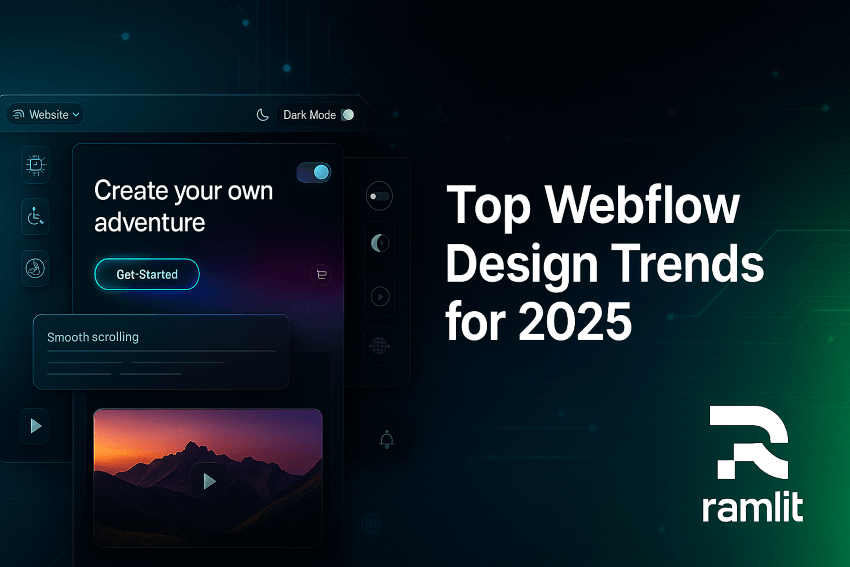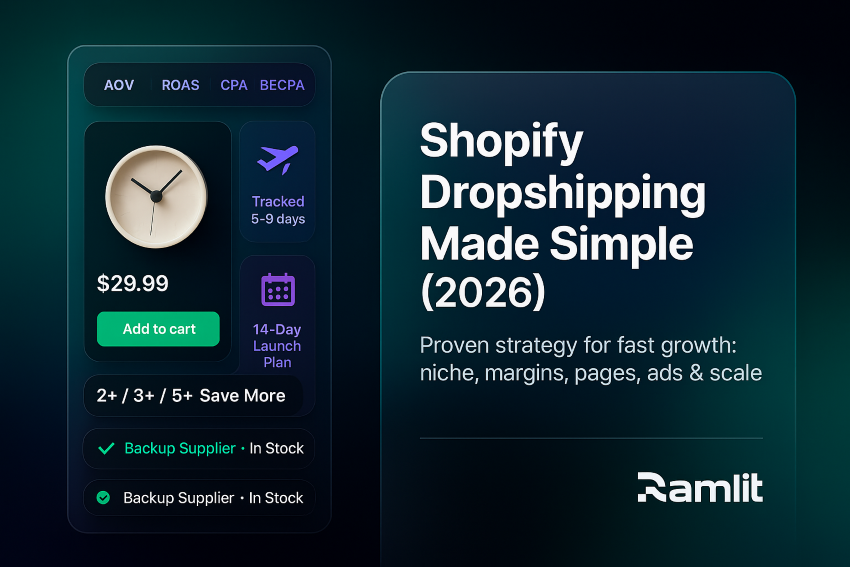Introduction
Web design evolves at lightning speed — and Webflow sits right at the heart of that revolution. As we move into 2025, customer expectations are higher, devices are more diverse, and brands need digital experiences that convert visitors into loyal fans.
Whether you’re a Webflow designer, a startup founder, or a marketing manager, knowing where the platform is headed can help you build faster, smarter, and more profitable websites. In this guide, we’ll explore the top Webflow design trends for 2025 — plus actionable tips to implement them today.
H2: Why Webflow Dominates in 2025
Webflow has matured from a niche no-code tool to a full-fledged enterprise-grade platform. With native CMS features, e-commerce integrations, and third-party add-ons, it’s the go-to choice for teams seeking flexibility without compromising performance.
Key reasons Webflow continues to dominate:
- Faster build times: Visual development + reusable components
- Cleaner code: Lightweight output compared to drag-and-drop builders
- Scalable CMS: Handle complex dynamic content
- No plugins nightmares: Native features cut reliance on third-party code
H2: Top Webflow Design Trends for 2025
Below we break down the most important Webflow design trends you should adopt this year.
H3: 1. AI-Powered Personalization
AI-driven features are no longer optional. Webflow designers now integrate AI tools to personalize content dynamically — showing different headlines, offers, or CTAs depending on user behavior.
How to leverage this trend:
- Use APIs from personalization engines to feed custom content into Webflow CMS.
- Combine AI analytics with heatmaps to optimize layouts automatically.
- Offer smart product recommendations or dynamic pricing based on past visits.
H3: 2. Micro-Interactions & Motion Design
Subtle animations, hover effects, and scroll-triggered transitions create delight and improve engagement. In 2025, micro-interactions become more purposeful — guiding the user rather than distracting them.
Tips:
- Use Webflow’s built-in animations for performance-friendly motion.
- Focus on functional animations (loading states, button feedback).
- Test animations on mobile to ensure smooth performance.
H3: 3. Accessibility-First Design
With accessibility regulations tightening worldwide, inclusive design is a must. Webflow now provides more ARIA labels and alt-text controls, making compliance easier.
Checklist:
- Color contrast ratios ≥ 4.5:1
- Keyboard-friendly navigation
- Semantic headings and descriptive links
- Responsive typography that adapts to device preferences
H3: 4. Dark Mode & Adaptive Color Palettes
Dark mode isn’t just aesthetic — it improves battery life and reduces eye strain. In 2025, Webflow designers create adaptive color systems that automatically switch based on user or device settings.
Implementation idea:
- Build two style sheets in Webflow and toggle via custom code or user preference detection.
- Ensure brand colors maintain contrast in both light and dark themes.
H3: 5. Component-Driven Design Systems
Think “design once, deploy everywhere.” Webflow’s Components feature allows designers to build modular systems — making redesigns and updates lightning fast.
Best practices:
- Create global symbols for headers, footers, and CTAs.
- Document usage guidelines in a Webflow CMS “style guide” page.
- Use Figma → Webflow handoff for consistency.
H3: 6. No-Code E-Commerce Upgrades
Webflow’s e-commerce capabilities in 2025 rival Shopify. Expect deeper integrations with payment gateways, inventory systems, and CRM platforms.
Action steps:
- Offer custom checkout flows using conditional visibility.
- Automate upsells with CMS-driven product suggestions.
- Integrate with AI chatbots for real-time support during checkout.
H3: 7. Faster Page Loads With Next-Gen Hosting
Google’s Core Web Vitals keep raising the bar. Webflow hosting now supports edge networks and optimized asset delivery.
How to optimize:
- Use WebP/AVIF images.
- Lazy-load heavy assets and third-party scripts.
- Test with Lighthouse and Webflow’s built-in performance tools.
H3: 8. Advanced 3D and AR Experiences
With WebGL and lightweight 3D frameworks, immersive design enters mainstream websites. In 2025, brands use 3D product previews and AR interactions directly in Webflow.
Tips:
- Use Lottie animations for lightweight vector-based motion.
- Host 3D models externally and embed via iFrames or custom code.
- Always provide fallback static images for low-bandwidth users.
H3: 9. Globalization & Multilingual Support
Serving global audiences requires multilingual setups. Webflow integrates with tools like Weglot or native translation workflows to manage content in multiple languages.
Best practices:
- Create a CMS-driven translation system.
- Offer currency localization for e-commerce.
- Test right-to-left (RTL) layouts for Arabic or Hebrew audiences.
H3: 10. Privacy-First & Cookie-Less Analytics
As privacy laws expand, businesses move away from invasive tracking. Webflow designers integrate privacy-first analytics like Fathom or Plausible.
Why it matters:
- Higher trust = higher conversions.
- Better compliance with GDPR/CCPA.
H2: Implementation Strategies for Designers and Agencies
To stay ahead of the competition, you can’t just know the trends — you must implement them strategically.
Steps:
- Audit your current Webflow site.
- Identify gaps where 2025 trends can add value.
- Create a design system roadmap.
- Test on multiple devices and screen sizes.
- Monitor analytics and adjust continuously.
H2: Overcoming Common Objections
- “Webflow can’t handle enterprise needs.” → In 2025, Webflow Enterprise solves scaling, SSO, and security.
- “It’s too hard to migrate from WordPress.” → Migration tools + API integrations make the shift seamless.
- “No-code means low quality.” → Clean code output and performance metrics rival custom development.
H2: Future Outlook — Webflow Beyond 2025
Expect Webflow to embrace even more AI-assisted design, deeper native integrations, and perhaps a full-blown marketplace of certified add-ons. Designers who invest in learning these tools now will become the go-to experts in the next wave of digital transformation.
Bullet Points / Quick Takeaways
- Webflow in 2025 = faster, smarter, and more scalable than ever.
- AI personalization, accessibility, and dark mode dominate design trends.
- Component-driven systems speed up development cycles.
- Multilingual support + privacy-first analytics build trust and global reach.
- Designers who adopt these trends early will stand out.
Call to Action (CTA)
Ready to future-proof your website with cutting-edge Webflow design trends? 💡 We help brands and agencies implement high-performing Webflow websites — from Figma to launch.
👉 **Contact us today to upgrade your website for 2025. click here
Optional FAQ Section
Q1: Can I migrate my existing WordPress site to Webflow easily? Yes. Tools and services now exist to automate content migration and preserve SEO.
Q2: Do these trends apply to small businesses? Absolutely — many of them (AI, accessibility, faster hosting) directly boost conversions for SMBs.
Q3: How much does it cost to implement these trends? Most trends can be adopted with free or low-cost tools; others may require premium integrations but pay off in ROI.
Q4: Is coding still necessary in Webflow? Not for core features. But knowing HTML/CSS can help customize advanced interactions.
Tone & Style Recap
- Conversational, human-centered language
- Short paragraphs + bullet lists for scannability
- Action-oriented and trust-building
- SEO-friendly without keyword stuffing




